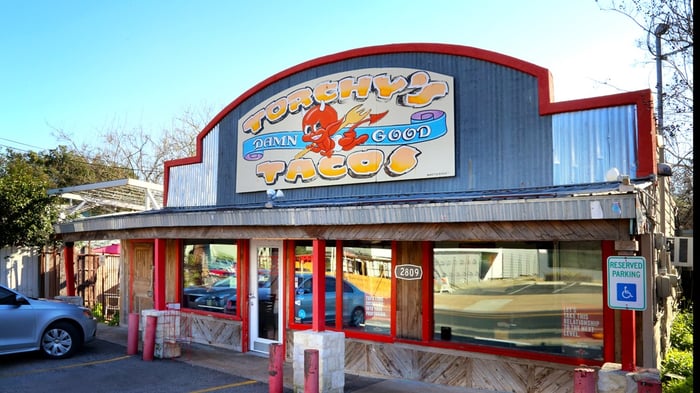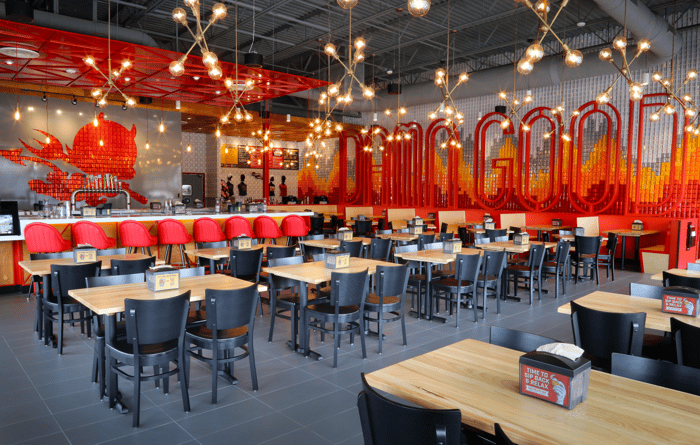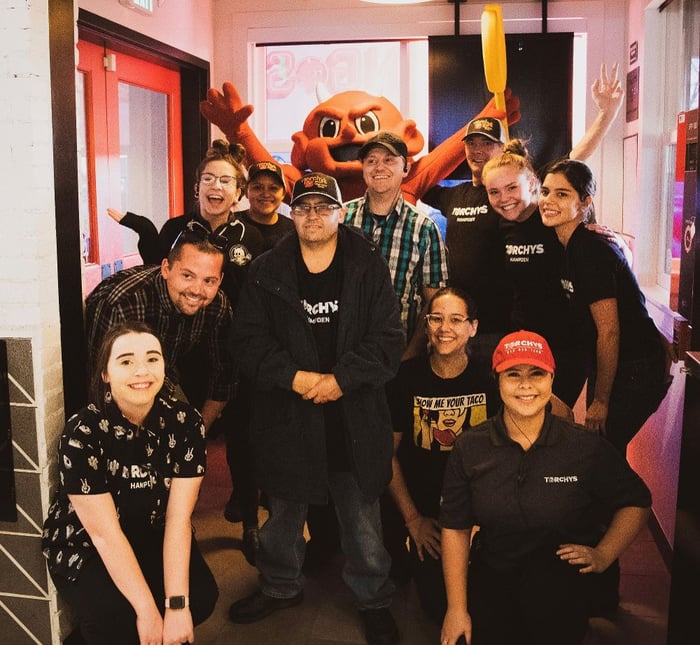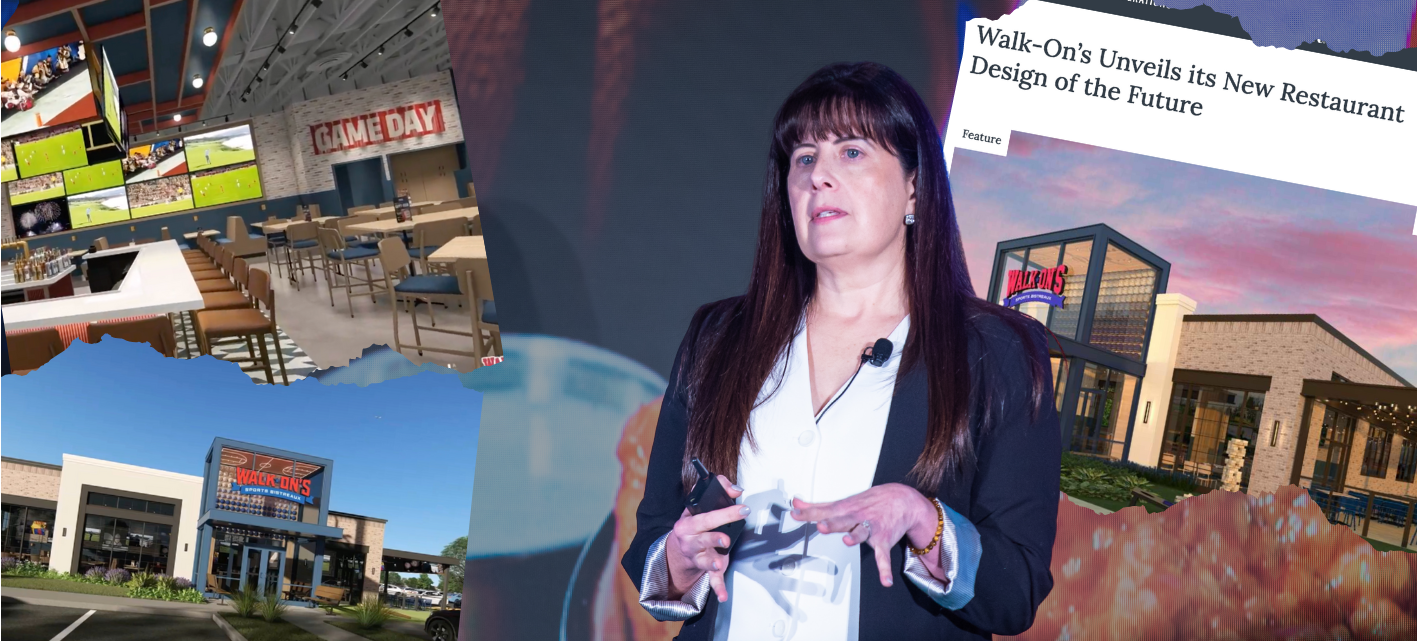From a single food truck on the streets of Austin to a fast-growing national brand, Torchy’s Tacos has come a long way in 17 years. What has not changed is the mindset of its founder.
Mike Rypka, a chef by training and the driving force behind Torchy’s, remains closely connected to the kitchen, the menus, and the people who bring the brand to life each day. That hands-on approach still shows up in the unexpected flavor combinations, scratch-made recipes, and cult-favorite margaritas that have helped define the brand.
During a live conversation at RestaurantSpaces in Austin, Rypka sat down with Michael P. Owens, founder of RestaurantSpaces and Co-Founder of Influence Group, to share what it took to build Torchy’s from the ground up and how the brand has protected its culture and quality through rapid growth and industry disruption.
Heartaches and Hardships
Rypka’s experience is a testament to the fact that big rewards require big risks. In the beginning, he maxed out his credit cards and took out a loan on his house just to get Torchy’s off the ground. “I put pretty much everything on black and said, ‘Okay, this has gotta work,’” he said.
Back then, his marketing plan mostly consisted of loading up the back of his old red Vespa with chips and salsa and riding it around town. "I'd hand out chips and salsa to every dentist's office, tire shop, didn't matter who you were," he said.
The stresses of those early years were invaluable preparation for the stresses to come — especially over the last few years. "I didn't have any financial backing, so I was literally week-to-week, paycheck-to-paycheck,” Rypka recalled. There would be Wednesdays when he’d look at his checking account and have no idea how he’d make payroll on Friday, only for salvation to come in the form of a big catering order or a local media write-up.
"We'd get just enough so paychecks wouldn't bounce," he said. "We've definitely had heartaches and hardships along the way, along with a lot of success.”
 The original taco truck where Torchy's Tacos began
The original taco truck where Torchy's Tacos began
“Damn, These Tacos Are Good”
Rypka attributes much of the brand’s success to the high bar it sets for quality. Torchy’s makes all its food from scratch every day, using fresh ingredients, and each location has its own unique design.
"We like to say that if you've been to one Torchy's, you've been to one Torchy's," he said. "The formats within the restaurant are the same — in terms of the kitchen layout and the way the bars are laid out — but we definitely try to do things differently in terms of the look and feel.”
This commitment to memorable branding goes back to the company’s infancy. “We were very purposeful, even though we started in a taco truck, about making sure that we had good branding and a good feel,” he said. That includes the Torchy’s logo, which appeared to Rypka in an epiphany-like way as he woke up one morning.
“It just came to me that this cute little baby devil would represent Torchy’s.”
That logo may be devilish, but the brand’s mission is a little more on the angelic side: to be “Damn Good” — an ethos sourced directly from early customers. “They would literally come up and say, 'Damn, these tacos are good,’" Rypka recalled. “So we decided to put it there. It was sort of this guiding light: if you're gonna say it's damn good, it better be damn good. It was really a way to raise our own standards, in terms of making sure that we deliver on a very high level to our guests.”
 Torchy's first brick-and-mortar location in Austin
Torchy's first brick-and-mortar location in Austin
Keeping Up with Convenience
Like most chains, Torchy’s has had to find innovative ways to keep up with the industry-wide emphasis on convenience over the last few years. Whereas others use shelves to store off-premise orders for third-party operators, Torchy’s shies away from this, instead directing delivery workers to the counter.
“The main reason we do that is we've found that we've had a lot more inaccuracies where they grab the wrong order,” Rypka explained. “It also helps us develop that relationship with those folks. Because they're an extension of your brand, basically, if they're gonna deliver your food somewhere.”
There’s a similar logic behind the cubbies his team is testing in some locations, where kitchen staff pass completed orders directly to dine-in customers. "They're right next to the expo station, so that way we can just pass 'em right through," he said. "It also gives our staff a chance to interact with the guest and vice versa. If they need something else or have questions, someone's right there to help ‘em. It's not some shelf off in the corner.”
While it’s essential to adapt to the new off-premise paradigm, Rykpa believes it’s equally important to remember the core tenets of the restaurant business. “I think people are overcorrecting when it comes to Covid,” he said. “People generally still want to dine in most of the time.”
Third-party delivery has its place, he argued, but the industry has yet to figure out how to make the last mile profitable. “It’s getting too cost-prohibitive,” he added. “I just think people are making a lot of changes, maybe leaning into too much of that over a crisis that happened over two years [ago].”
 The chain uses "Damn Good" prominently in its restaurants, inspired by early customer feedback
The chain uses "Damn Good" prominently in its restaurants, inspired by early customer feedback
Investing in Talent
As Torchy’s scaled to dozens more locations, Rypka refused to lose sight of the people who make it all work. “We’re in the people business; we invest a ton of money in training, we invest a lot in the development of our folks,” he said.
A focus on internal promotions helps ensure that new stores have at least one Torchy’s veteran in the management team, while the company’s Managing Partner Program — in which selected partners pay a fee to operate their location and share in the profits — ensures that operators are deeply invested in its success.
This people-first ethos has also helped Torchy’s navigate recent workforce issues. Acknowledging a few months of struggle here, Rypka said that labor shortages have yet to seriously impact the business. In addition to competitive pay and tip sharing, he credited the company’s robust culture, including an open-door policy in which any employee can contact him with their concerns.
"Anybody, anywhere can give a call anytime," he said. "The dishwasher in Dallas can call me if he needs to.”
 Torchy's team members
Torchy's team members
“It’s Gonna Be Bumpy”
Strong development headwinds have required a deliberate approach as well. While Torchy’s “took it in the pants last year from a margins perspective,” Rypka said, its transactions are nonetheless outpacing the industry today. Raising prices helped weather the storm, of course, but so did pre-buying. “We've got a year's worth of switch gear for our buildout and we've pre-ordered HVAC systems with companies that we work with,” he explained. “We do a lot of long-term buying in terms of food and meat and chicken.”
As he looks ahead to the next few years, Rypka expects food prices to continue coming down and hopes construction costs will decrease as well. "It's gonna be bumpy this next year on all levels," he said. "Things will start to hopefully ramp up in 2024, but this year's probably gonna be bumpy for all of us. Put your seatbelts on."

Posted by
Chain Restaurants Reimagined.
The Retreat to Reimagine Restaurant Development, Design + Technology.
April 12-14, 2026 | Miami, FL






-3.png)
-4.png)
-3.png)


Comments